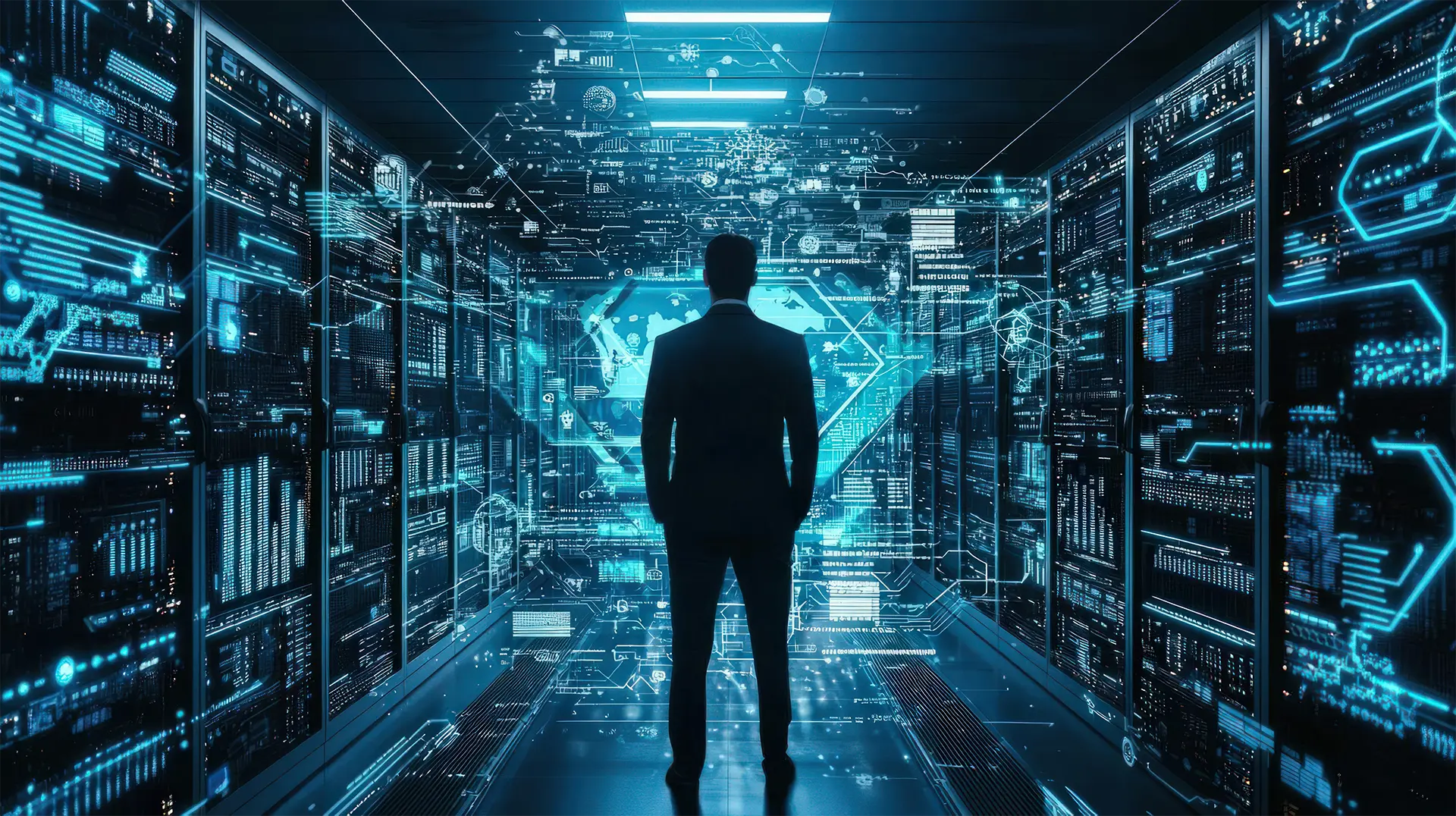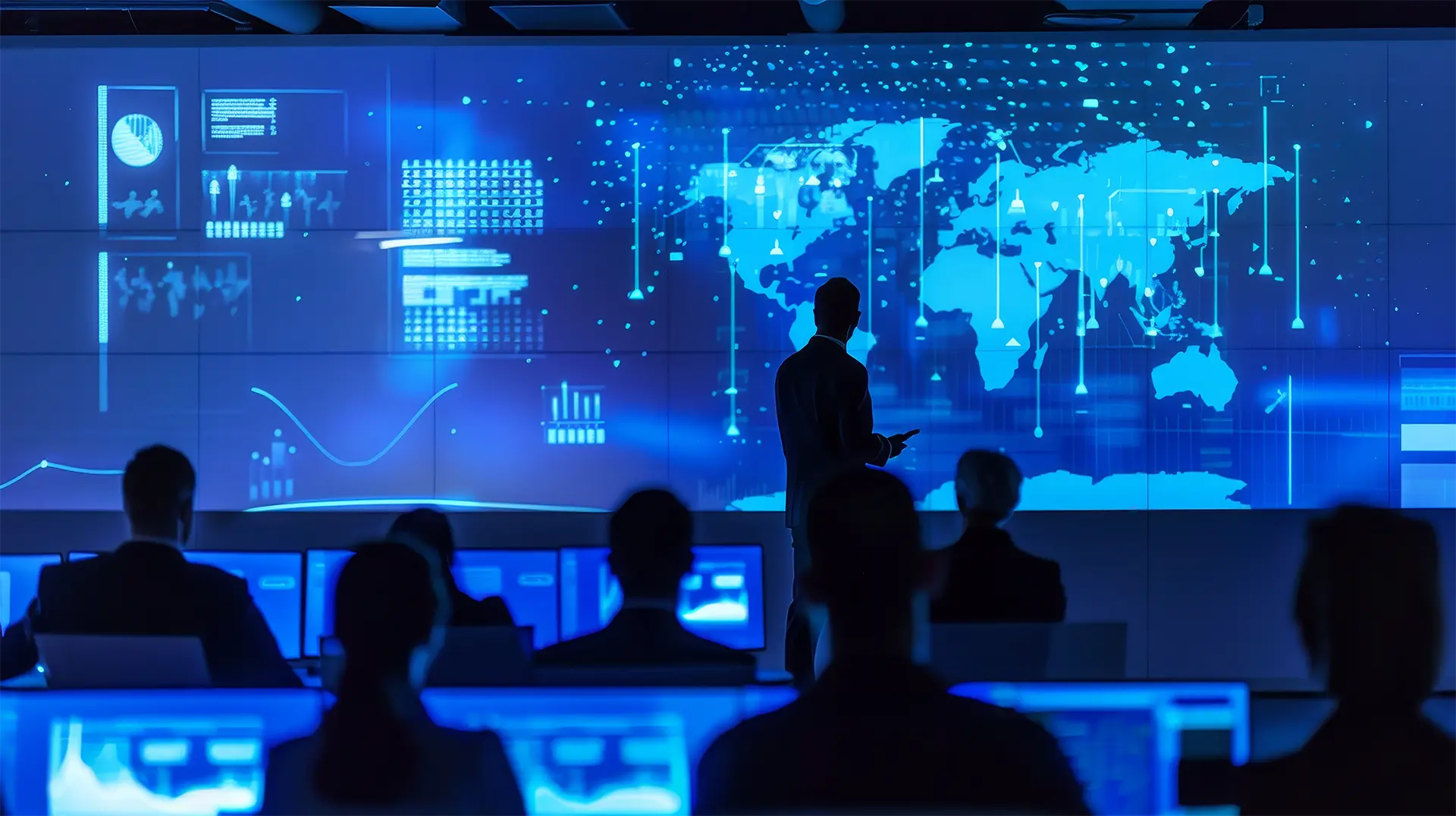Table of contents
- The role of the CISO
- Technical skills and risk management
- Security strategy and continuous training
- Technologies and tools supporting the CISO: SIEM, EDR, DLP
- The evolution of the CISO role
The Chief Information Security Officer (CISO) is a key figure in ensuring a company’s cyber security.
The CISO not only protects sensitive data but is also responsible for developing strategies to counter potential threats and ensure cyber security resilience. But who exactly is the CISO, and what are their main responsibilities?
The role of the CISO
The Chief Information Security Officer (CISO) is the executive responsible for overseeing the organization’s cyber security strategy. This role requires advanced technical skills and a deep understanding of cyber threats, as well as strategic abilities to protect sensitive data and critical infrastructures. The CISO must be able to identify potential threats, develop and implement security measures, and ensure that all company systems and networks are protected.
Technical skills and risk management
A good CISO must have strong technical skills in fields such as computer engineering and cyber security, as well as a deep knowledge of artificial intelligence (AI) and cyber security. The ability to manage risk is equally crucial: the CISO must assess system vulnerabilities, anticipate potential cyber attacks, and develop mitigation plans. Risk management also includes implementing AI algorithms to monitor user behavior and detect suspicious activities.
Cyber threats and information security
Cyber threats are constantly evolving and becoming increasingly sophisticated. The CISO must
stay up to date on new technologies and tactics used by hackers to ensure a high level of security. By using artificial intelligence and other advanced tools, CISOs can improve response times and reduce false positives—false alarms that can distract from detecting real threats.
Incident response and data protection
When a cyber attack occurs, the timely and effective response of the CISO is crucial. This includes coordinating incident response, analyzing the causes of breaches, and implementing measures to prevent future intrusions. Protecting sensitive data is another key area of responsibility for the CISO, who must ensure that security systems are robust and capable of protecting against unauthorized access and other threats.
Security strategy and continuous training
Developing a comprehensive security strategy is essential for the CISO. This strategy must include the use of artificial intelligence to improve cyber security and the adoption of preventive measures to protect company data.
Continuous staff training is another crucial aspect: the CISO must promote a culture of security within the organization and raise employee awareness of best security practices. Collaboration with educational institutions such as the Politecnico di Milano can help ensure that staff are adequately prepared to face cyber threats.

Technologies and tools supporting the CISO: SIEM, EDR, DLP
The Chief Information Security Officer (CISO) faces a wide range of cyber threats and must ensure the security of company data. To effectively fulfill their role, the CISO uses various technologies and tools to monitor, analyze, and manage the organization’s cyber security risks. Among these technologies, SIEM, EDR, and DLP are among the most important.
SIEM (Security Information and Event Management)
SIEM is a security solution that centralizes the collection and analysis of security data from various sources within the organization, such as firewalls, servers, endpoints, and applications. SIEM enables the CISO to gain full visibility into security activity across the network and quickly identify potential threats and incidents.
Key features of SIEM
- Data collection and aggregation
SIEM collects security data from various sources, aggregates it, and normalizes it for easier analysis. - Real-time analysis
SIEM analyzes data in real time to identify suspicious or abnormal activities that may indicate a threat. - Event correlation
SIEM correlates security events from different sources to detect complex attack patterns that may go unnoticed if analyzed individually. - Alarm management
SIEM generates alarms when potential threats are detected, allowing the security team to respond quickly. - Reporting and compliance
SIEM provides detailed reports that help the CISO demonstrate compliance with security regulations and improve the organization’s security strategy.
Benefits of SIEMù
- Complete visibility
Provides a comprehensive overview of the entire IT infrastructure, allowing the CISO to effectively monitor and manage security. - Reduced response times
Thanks to real-time analysis and alarm management, SIEM significantly reduces incident response times. - Improved compliance
Provides reporting tools that help demonstrate regulatory compliance and improve security policies.
EDR (Endpoint Detection and Response)
EDR is a security solution focused on protecting endpoints, such as laptops, desktops, and smartphones that access the company network. EDR allows the CISO to monitor endpoint behavior in real-time, identify suspicious activities, and respond quickly to threats.
Key features of EDR
- Continuous monitoring
EDR constantly monitors endpoint activity to detect abnormal or suspicious behavior. - Threat detection
Uses advanced algorithms and artificial intelligence to identify new and emerging threats that may escape traditional security tools. - Automated response
EDR can automatically execute response actions, such as isolating a compromised endpoint to prevent the spread of the threat. - Forensic analysis
Provides tools for the forensic analysis of incidents, helping to understand the cause of the attack and improve future defenses. - Integration with other security solutions
EDR can integrate with other security solutions, such as SIEM, to provide a more comprehensive view of threats and improve incident response.
Benefits of EDR
- Advanced endpoint protection
Provides effective protection against advanced threats targeting endpoints, reducing the risk of compromises. - Proactive threat detection
Uses advanced detection techniques to identify new and emerging threats before they can cause significant damage. - Rapid incident response
Allows quick responses to threats, reducing the impact of incidents on the company network.
DLP (Data Loss Prevention)
DLP is a security solution that helps prevent the accidental or intentional loss of sensitive data. DLP enables the CISO to identify, classify, and protect sensitive data, such as financial data, health data, and personally identifiable information (PII).
Key features of DLP
- Data identification and classification
DLP automatically identifies and classifies sensitive data within the organization. - Data traffic monitoring and control
Monitors data traffic in real-time and applies controls to prevent the loss of sensitive data. - Protection of data in motion and at rest
Protects data both when it is in transit across the network and when it is stored on storage devices. - Security policy management
Allows the CISO to define and manage security policies that specify how sensitive data should be handled. - Reporting and audit
Provides reporting and audit tools that help monitor the effectiveness of data protection measures and demonstrate compliance with regulations.
Benefits of DLP
- Sensitive data protection
Reduces the risk of losing sensitive data by protecting the integrity and confidentiality of company information. - Regulatory compliance
Helps ensure compliance with data protection regulations such as GDPR, reducing the risk of penalties. - Reduced risk of insider threats
Monitors and controls employee activities, reducing the risk of insider threats.
Integration of security technologies
The integration of SIEM, EDR, and DLP provides the CISO with a comprehensive and coordinated approach to cybersecurity. By using these technologies together, the CISO can gain a holistic view of the organization’s security, improve threat detection, reduce incident response time, and ensure the protection of sensitive data.
Examples of integration
- SIEM and EDR
The SIEM can collect data from endpoints monitored by the EDR, providing a centralized view of suspicious activity and improving threat detection capability. - SIEM and DLP
The SIEM can use data collected by the DLP to identify and correlate data loss incidents with other security activities, providing a complete threat picture. - EDR and DLP
The EDR can use information from the DLP to better protect endpoints and prevent the loss of sensitive data.
The evolution of the CISO role
The role of the CISO is becoming increasingly important as cyber threats become more complex. CISOs must be ready to quickly adapt to technological changes and develop new security strategies. With the growing integration of artificial intelligence in cyber security, CISOs will need to leverage this technology to improve their threat detection and incident response capabilities while ensuring that company data remains protected.
FAQ
- Who is the Chief Information Security Officer (CISO)?
The CISO is the executive responsible for a company’s cyber security and data protection. - What are the main responsibilities of the CISO?
The CISO develops security strategies, manages risk, responds to incidents, and protects sensitive data. - What skills must a CISO have?
A CISO must have advanced technical skills, risk management abilities, and a deep understanding of cyber threats and AI. - How does the CISO use artificial intelligence in cyber security?
The CISO uses AI algorithms to monitor user behavior, detect suspicious activities, and improve incident response times. - How does the CISO manage cyber threats?
The CISO monitors new threats, implements preventive measures, and constantly updates security policies. - What is the role of the CISO in incident response?
The CISO coordinates incident response, analyzes the causes of data breaches, and implements measures to prevent future intrusions. - How does the CISO contribute to staff training?
The CISO promotes a culture of security and raises employee awareness of best practices in cyber security. - Why is the role of the CISO important for a company?
The CISO protects company data, manages cyber risk, and ensures the organization’s resilience against threats. - What are the main challenges for a CISO?
The main challenges include quickly adapting to technological changes and managing increasingly complex cyber threats. - How can one become a CISO?
Typically, becoming a CISO requires a degree in computer engineering or cyber security and several years of experience in the field of cyber security.
